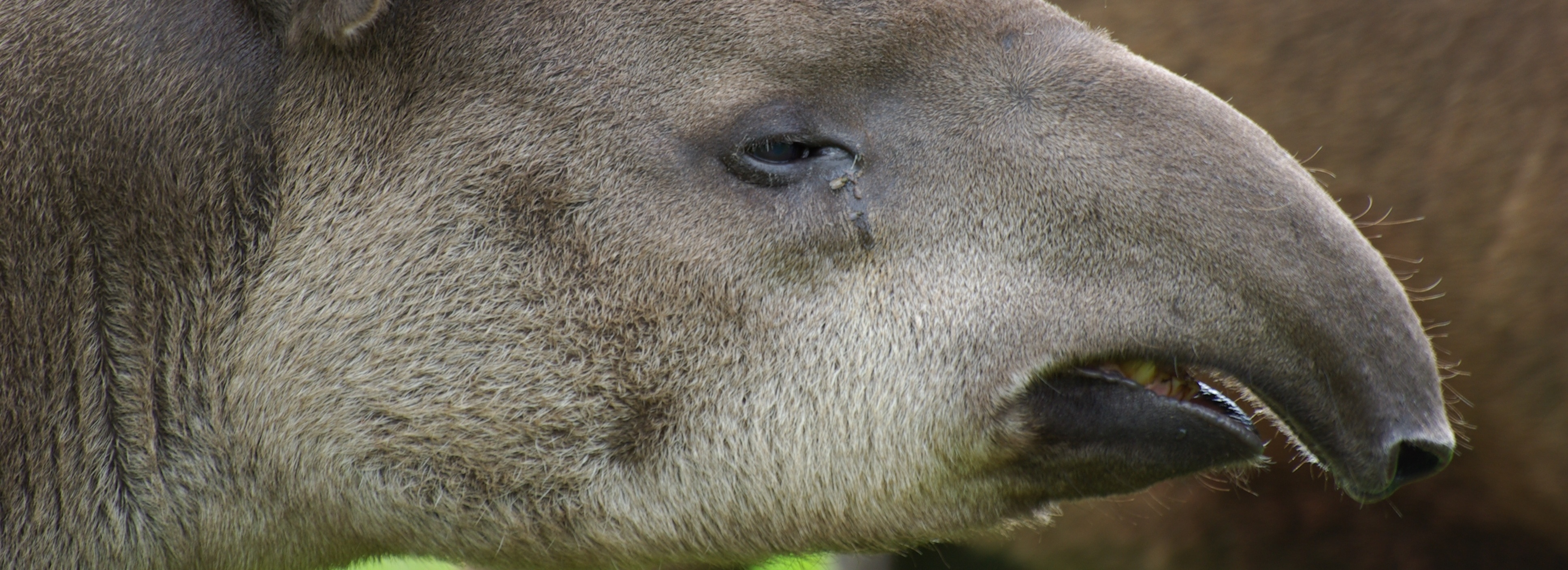Lowland Tapir
Tapirus terrestris
Range: Broadly distributed across most of mainland South America east of the Andes, from northern Colombia extending to southern Brazil, northern Argentina and Paraguay, including throughout Venezuela and the Guyana’s, eastern Peru, and northern and eastern Bolivia
Habitats: Tapirs may live in nearly any wooded or grassy habitat where there is permanent supply of water. They commonly shelter in forests or thickets by day, emerging at night to feed in bordering grassy or shrubby areas. Tapirs are agile in closed or open habitat and on or under water
Threats: Deforestation, hunting and competition with domestic livestock have all contributed to the decline and fragmentation of lowland tapir populations. Hunting for tapir meat is increasing with tapir meat now frequently sold in city markets throughout South America. In Paraguay and Argentina tapirs are hunted for their hides, which are commonly used in Paraguay to make sandals that are sold to tourists as souvenirs. The impacts of hunting are made worse as tapirs are unable to quickly repopulate impacted areas.
Social Behaviour: Except for females with young they are usually solitary animals.
Food: Tapirs eat aquatic vegetation and the leaves, buds, twigs and fruits of low growing land plants. They also graze for food eating long grasses and corn.
Information: Tapirs love wallowing and splashing in mud or water and can use the trunk to act as a snorkel in deep water.
Conservation: Our tapirs share their enclosure at South Lakes with our bears. Our charity The Wildlife Protection Foundation funds the Chaparri Ecological Reserve in Peru to help conserve the Andean Spectacled Bear. To find out more go to http://www.wildlifeprotection.info/





